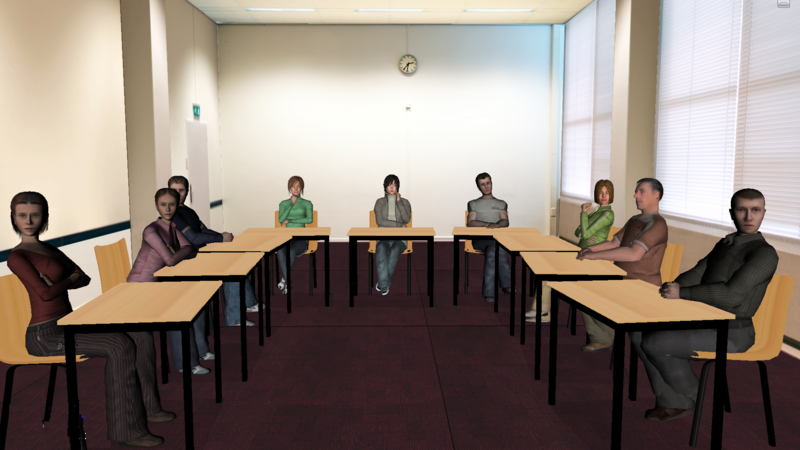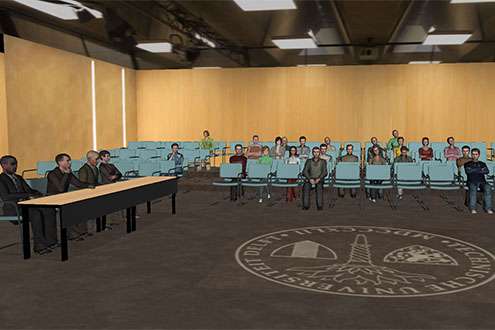Rehearsing a speech to a virtual audience increases confidence

Giving a speech or presentation to an audience can be nerve-wracking. To practice, you can either imagine an audience or enlist a few friends or acquaintances. But these practice scenarios are far from the reality of an audience made up of different characters, emotions and interests. Ni Kang observed the behavior of a group of people listening to speeches and developed a virtual audience for speakers to practise on. On Wednesday, 2 November, she will obtain her doctorate on the subject of 'public speaking in virtual reality' at TU Delft.
Dealing with the audience
Ni Kang investigated whether students who want to practice a speech or presentation using virtual reality actually find it useful. She explained, "Students were divided into two different set-ups: One group had to practice in front of a virtual audience. The other group practiced in front of an empty screen, on which they had to imagine the audience." The results revealed that students who practiced using virtual reality found it more pleasant and had more confidence in dealing with the audience.
Realistic virtual audience
In order to develop a realistic audience for virtual reality, Ni Kang observed audiences watching different presentations: critical, neutral, long-winded and positive presentations. Beforehand, the people in the audience were asked how they would describe their personality (introvert, extrovert, open or closed), how they felt at that moment (positive, neutral or negative) and whether they had a positive or negative attitude towards the subject of the presentation. Ni Kang then studied the video of the audience and recorded each audience member's body posture every two seconds: the position of the head, arms and legs and the direction in which they were looking.
Bored audience
To develop a behavioral model, Ni Kang compared the completed surveys with the actual behavior of the audience. This revealed five types of audience: an interested audience, a critical audience, a nervous audience, a bored audience and an uninterested audience. When practicing, speakers can indicate the type of audience they would like to practice with and the type of setting: a theater, lecture room, seminar room or small group. To check that the audience types were accurate, hundreds of students were asked to identify the type of behavior shown by the audience in the animations.
At the touch of a button
So why is it necessary to have an audience that is as realistic as possible for virtual reality? Assistant professor and co-supervisor Willem-Paul Brinkman clarified, "Presentations and speeches often last a long time, and it was difficult in the past to have a virtual audience behave realistically for a longer period. Using the behavioural model, it is now possible to choose several variables at the touch of a button. Options include a bored audience, with associated movements. It is also possible to change the behavior of the virtual audience, for example from bored to interested. In the future, this will enable speakers to find out how they react to changes in audience behavior."





















